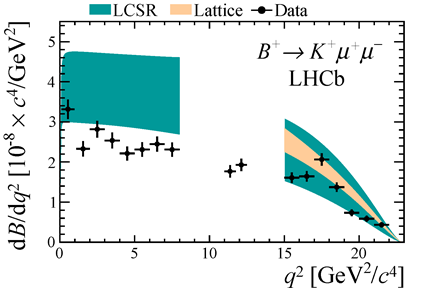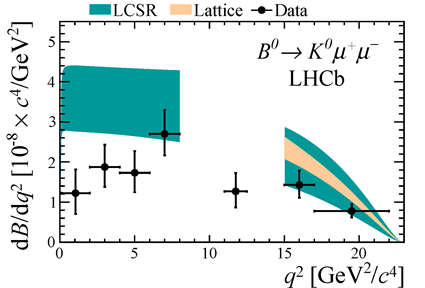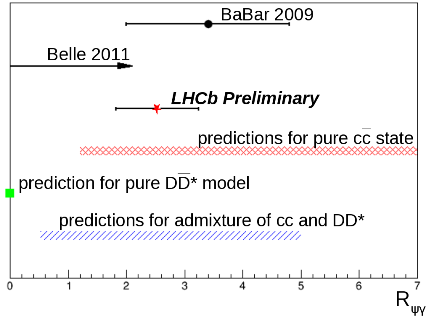The LHCb Collaboration has reported new important results at the Rencontres de Moriond EW Interactions and Unified Theories, March 15th – 22nd and QCD and High Energy Interaction, March 22nd – 29th.
The run 1 data taking period ended one year ago. The LHCb experiment collected 1fb-1 of data from the pp collisions at 7 TeV in 2011 and additional 2fb-1 at 8 TeV collisions in 2012. The results of analysis of beauty and charm particles decays were already presented at many conferences and reported in the news below. At this year Moriond conference more precise results of different analysis were presented using larger data sample and/or including other decay channels.
The decay of the beauty meson B into an excited K meson K* and a μ+ and μ– pair is considered as an important channel for new physics search, see 9 August 2013, 13 March 2012 and 22 July 2011 news for introduction. Different distributions and branching fractions have been studied for these B meson decays and compared with the Standard Model predictions. The differences in the results of measurements of neutral B meson decays into K*0μ+μ– and charged B+ meson decays into K*+μ+μ– is called an “isospin asymmetry”. The Standard Model calculations predict this isospin asymmetry to be small what, in fact, was confirmed by the LHCb analysis of 2011 (1fb-1) data. On the other hand, when the physicists made similar analysis by replacing the excited kaon K* by its ground state K an evidence was obtained for a possible isospin asymmetry (see 25 May 2012 news). The analysis of full 3fb-1 data sample presented at the Rencontres de Moriond gave results consistent with the small asymmetry predicted by the Standard Model in both (K* and K) cases. However, even if the difference between results of measurements of neutral and charged B meson decays is small there is a tendency for differential branching fractions to have lower values than the theoretical predictions as seen in the images below.
click the images for higher resolution
Exotic states, particles which are not composed of quark and anti-quark pairs (mesons) or three quarks (baryons), have been searched for since nearly 50 years. One of the most famous candidates for such an exotic state is called the X(3872). The LHCb Collaboration has unambiguously determined its quantum numbers JPC to be 1++ (see 26 February 2013 news for introduction). Possible exotic explanations of the X(3872) nature include a DD* molecules or multi quark anti-quark system such as a diquark-diantiquark tetraquark or charmonium-molecule mixture. Classical interpretation of X(3872) as a pure cc charmonium state is not excluded but this assignment is very unlikely (see again 26 February 2013 news).
The LHCb Collaboration has presented at the Rencontres de Moriond a result of measurement of ratio of branching fractions of X(3872) decay into ψ(2S)γ and J/ψγ, Rψγ. This ratio is predicted to be different for different natures of X(3872) as seen in the image. The LHCb result 2.46 ± 0.64 ± 0.29 is more precise, but compatible with other experiments. It does not support a pure DD* molecule interpretation.
Read more in the LHCb presentations, LHCb papers and conference contribution here and in the CERN Courier article.



